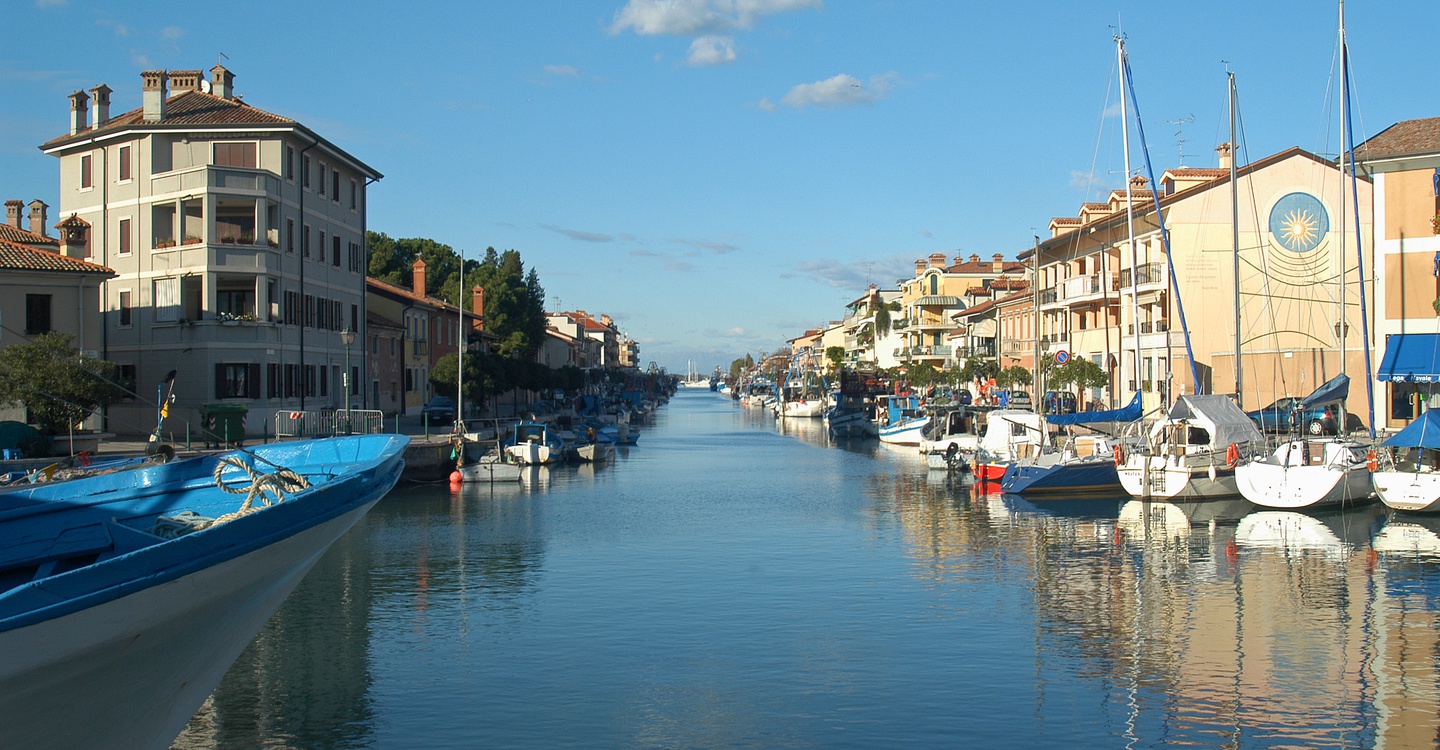The Treccani dictionary gives the meaning of the nautical term ‘mandracchio’ as a “small, shielded stretch of water, such as a small harbour within a port, intended to shelter small boats”. The Hapsburg administration of the early 20th century excavated and developed Grado’s picturesque port-canal with its characteristic upside-down Y-shape and reinforced concrete barriers to protect against sea storms and the strong bora wind. This was first and foremost for the many fishing boats that, weather permitting, sailed along the canal to the lagoon and always provided fresh fish.
Nowadays, Grado’s Fishermen’s Cooperative runs a busy “Zero Miles” project with an extremely popular fish market and the innovative seaside osteria, or tavern, right at the end of the Riva Dandolo.
If we were to go back in time, however, we would find five canneries along the canal, processing and preserving sardines in oil. The first was founded towards the end of the 19th century by Carl Warhanek from Vienna, and others soon followed, one of which was owned by the French Food Preserves Company. The quantity and quality of production was surprising, but even more important was the employment it provided for approximately 200 people from the area. Two other companies and an ice factory were opened in subsequent years on the opposite side of the canal: optimising logistics was not just a modern prerogative!
Today, pleasure craft, many of which flying a foreign flag, are moored along the aforementioned upside-down “Y” in the heart of Grado. Ancient tales tell of a ferryman who linked the opposite banks of the Mandracchio, and it is easy to imagine the busy port at the time of the Grado-Aquileia river line. This was inaugurated in the summer of 1888, and steamboats carried tourists to Grado from Belvedere, the terminal of the train line of the period from Vienna and Prague. Later, in 1924, a 1 hour and 45 minutes trip was advertised for tourists on various steamships linking Grado and Trieste. However, the most frequent connections were those of the ferries operating from the end of the Mosconi road before the swing bridge was built in the mid-1930s to complete the link between the mainland and the island. Once they had crossed the lagoon, the early Grado tourists were welcomed directly by the hotel and guesthouse doormen as they disembarked at the port: postcards of the time immortalised the exclusive hotels and fashionable cafes around the port. It’s easy to imagine how different the surrounding environment must have appeared before the various land reclamation and “infill” works were done.
Here at the port, we find Grado’s umbilical cord, so to speak. It is an essential part of a walk down to the beach or to the maze of the historic town centre, or for going out to discover the lagoon and its unforgettable landscape. On the first Sunday morning in July there is a centuries-old local tradition, in which a procession of boats starts and returns to this point for the ‘Perdòn de Barbana’. The people of Grado really look forward to this event, which is a “must” for any tourists and visitors seeking a genuine local atmosphere. As part of the “Nativity Scenes in Grado” during the Christmas festivities, one of the most attractive nativity scenes is created on the water at this departure point for the not-to-be-missed tour of the various districts in Grado to admire a unique overview of the art of nativity scenes, combined with folk creativity and typical local imagination. And perhaps it was at this point that the musician Franco Battiato made the “Stop-off in Grado on Easter Sunday” immortalised in the song “Scalo a Grado” featured on his 1982 album L’Arca di Noè (Noah’s Ark).
